
10 Days Xining and Tibet Train Tour
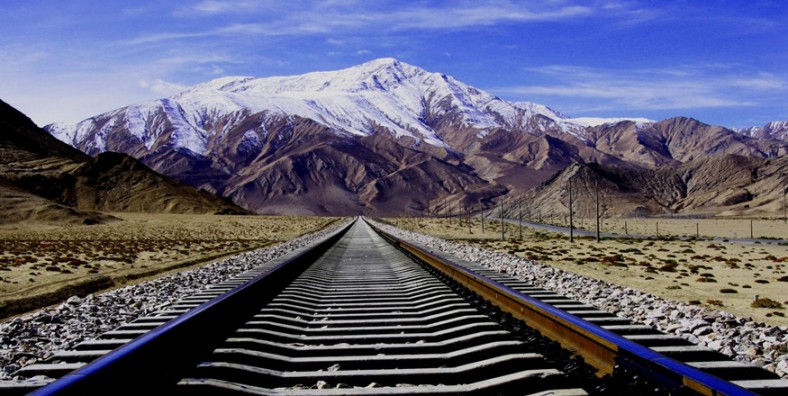
Tour Overview
This 10-day Xinning and Tibet tour starts from Xining, then to Lhasa by the most beautiful train to Lhasa. You will visit the largest salt lake in China. Then...
Code of Tour: YCT0000003882
Length of Travel: 10 Day
Destinations of Tour: Xining-Qinghai Lake-Lhasa-Namtso-Shigatse-Mt.Everest
Departure City: Xining
Price of Tour: Request
Type of Tour:
Features of Tour: Nature Culture History Minority Landscape
This 10-day Xinning and Tibet tour starts from Xining, then to Lhasa by the most beautiful train to Lhasa. You will visit the largest salt lake in China. Then take Qinghai-Tibet train to Lhasa. One can worship holy Potala palace, Jokhang temple– center of Buddhism and the largest Tibetan monasteries –Drepung monastery and watch monk debate in Sera monastery. You will arrive in Shigatse– Tibetan religious and political center, via Lhatse and Shegar, and then head to Mount Everest- majestic and highest mountain in the world, and appreciate the scenery of sunset and sunrise of next morning.
Highlights
- Climb the dazzling Gyantse Kumbum, a monumental chorten with mural-filled chapels.
- Marvel at the turquoise waters of Yamdrok-tso, one of Tibet’s most sacred lakes.
- Go down into the bowels of the Potala, the impressive but spiritless citadel of the Dalai Lamas.
- Join the shuffling, murmuring pilgrims around the shrines of the Jokhang, the spiritual heart of Tibet.
- Follow monks, mendicants and fellow pilgrims around the Barkhor, Lhasa’s fascinating medieval pilgrim circuit.
- Take in a prayer meeting or some monk debating at Sera and Drepung, two of the largest and most intact of Tibet’s great monasteries.
- Train trip experience from Xining to Lhasa.
Brief Itinerary
Day 1 Arrive in Xining
Day 2 Xining Day Tour and Take overnight Train to Lhasa
Day 3 Sightseeing along the railway and arrive in Lhasa
Day 4 Lhasa
Day 5 Lhasa-Yangpachen – Namtso – Lhasa
Day 6 Lhasa-Yamdrok lake-Gyangtse-Shigatse
Day 7 Shigatse – Lhatse – Tingri (Shegar) – Tingri – Rongphu Monastery
Day 8 Rongbuk Monastery – Everest Base Camp – Tingri – Shigatse
Day 9 Shigatse to Lhasa
Day 10 Departure from Lhasa
Google Map
Detailed Itinerary
Day 1 Arrive in Xining
Sightseeing and Activities:Arrive in Xining
Accommodation:
Meals:
Transfer to your hotel after arriving in Xining airport or railway station. The rest of the time is at leisure. You can have a good rest or walk around in the city.
Stay overnight in Xining
Day 2 Qinghai-Lhasa
Sightseeing and Activities:Qinghai Lake Day Tour and Stay overnight Train to Lhasa
Accommodation:
Meals:
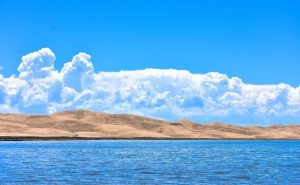
In the morning, drive about 2.5 hours from Xining to Qinghai Lake, China’s largest inland salt water lake. The ellipse-shaped lake looks like a huge poplar leaf sitting on the alpine prairie. Scenery in Qinghai lake varies according to seasons. Summer and autumn have the most comfortable weather conditions and the lake’s scenery is most beautiful during these seasons. The most charming and attractive place in Qinghai Lake is the Bird Island. It situates on the western shore of the Lake. Cruising for about 30 minutes is a popular way to appreciate the lake. On the way to this charming lake, you can get a view of Riyue Mountain. In the afternoon, drive back to Xining. Then, transfer to railway station for your overnight train to Lhasa.
Stay overnight in the train
Day 3 Lhasa Arrival
Sightseeing and Activities:enjoy the train ride
Accommodation:
Meals:
You will spend a whole day on the train to Lhasa and enjoy fabulous scenery along the world famous Qinghai-Tibet railway, the highest railway in the world. Spectacular land of snows, boundless desert, vast grassland, grand ice mountains, and beautiful lakes will continually appear and strongly attract your heart. You will arrive in Lhasa in late afternoon or evening. Then transfer to your hotel.
Stay overnight in Lhasa
Day 4 Lhasa
Sightseeing and Activities:Potala Palace-Jokhang Temple-Sera Monastery
Accommodation:
Meals:
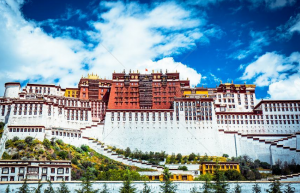
In the morning, visit Lhasa’s landmarks, Potala Palace and Jokhang Temple. First go to Potala Palace to explore its grand and myriad chapel, and appreciate the jeweled burial chorten of past Dalai Lamas as well as statuary, frescoes and paintings. Later visit the Jokhang Temple, which is considered as the most sacred temple in Tibet and draws tremendous number of pilgrims from all over Tibet each year for it houses a magnificent image of Sakyamuni at 12 years old. The Barkhor, a pilgrimage circuit encircling the Jokhang, also serving as the biggest bazaar in Lhasa, is a great place full of handicrafts, ambers, jewelry, Tibetan clothes, ect. In the afternoon, explore the Sera Monastery which was founded in 1419 by Tsongkapa’s disciple Jamchen Choeje. The most attractive is its Buddhist Scriptures debating held in the courtyard mostly around 6:00 – 7:30 in the afternoon.
Stay overnight in Lhasa
Day 5 Lhasa – Yangpachen – Namtso – Lhasa
Sightseeing and Activities:Lhasa – Yangpachen – Namtso – Lhasa
Accommodation:
Meals:
Drive to Yangpachen, 110 km away from Lhasa, and then continue driving to the holy Namsto Lake, the second-largest saltwater lake in China. It is over 70km long and reaches a width of 30km. In clear weather the water is a miraculous shade of turquoise and there are magnificent views of the nearby mountains. The wide open spaces, dotted with tents of local nomads, are intoxicating. After enjoying the fabulous scenery, we will drive back to Lhasa.
Stay overnight in Lhasa
Day 6 Lhasa-Yamdrok lake-Gyangtse-Shigatse
Sightseeing and Activities:Lhasa-Yamdrok lake-Gyangtse-Shigatse
Accommodation:
Meals:

Passing by the green farmland of Nyangchu Valley, Yamdrok Lake, Karo-la Glacier roadside at 4960m, we move westwards to the second biggest city of Tibet, Shigatse, the area spiritually hosted by Pamchan Lama. The most important attraction for today is Yamdrok Lake and Kubum monastery in Gyantse. Yamdrok Lake is shaped like coiling scorpion with deep blue in color and Kumbum Monastery has a 35m-high chorten (stupa) with its white layers trimmed with decorative stripes and its crown-like golden dome.
Stay overnight in Shigatse
Day 7 Shigatse – Lhatse – Tingri (Shegar) – Tingri – Rongphu Monastery
Sightseeing and Activities:Shigatse – Lhatse – Tingri (Shegar) – Tingri – Rongphu Monastery
Accommodation:
Meals:
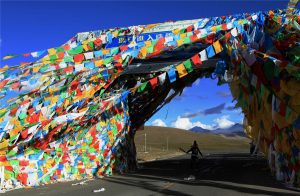
Drive westwards along the Friendship way to Tingri. There is about 90km bumpy road from Tingri to Rongpuk. The road is under construction, and it is very rough from Tingri to E.B.C. We will pass the wild grassland, cross the rapid river and high mountains. If the weather is clear, you can have a glimpse of four mountains which are 8000m high or more. They are Mt. Lhotse (8516m), Mt. Everest (8848m), Mt. Qowowuyag (8201m) and Mt Mayalu (8463m).
Stay overnight in Rongphu Monastery (Tent or Guest House)
Day 8 Rongbuk Monastery – Everest Base Camp – Tingri – Shigatse
Sightseeing and Activities:Rongphu Monastery – Everest Base Camp – Tingri – Shigatse
Accommodation:
Meals:
Appreciate the sunrise from Rongphu in early morning, and then to view Mt. Everest. It is fabulous and splendid. After walking, you will get on the local bus to arrive at Everest Base Camp in half an hour. You can take pictures of the splendid Mt. Everest at the camping site. Then in the afternoon, go back from EBC and drive back to Shigatse.
Stay overnight in Shigatse
Day 9 Shigatse to Lhasa
Sightseeing and Activities:Shigatse to Lhasa:Tashilunpo monastery
Accommodation:
Meals:
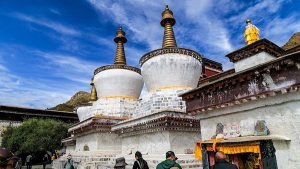
Before spending about 4 hours driving back to Lhasa from Shigatse, we will visit the largest Monastery in west Tibet, the Tashilhunpo Monastery which is one of the six great Gelukpa institutions and was founded in 1447 by a disciple of Tsongkapa, contains the world’s largest gilded copper image (26m high) of future god Jampa. Drive along the Friend-ship Highway back to Lhasa.
Stay overnight in Lhasa
Day 10 Departure from Lhasa
Sightseeing and Activities:Departure from Lhasa
Accommodation:
Meals:
You will be transferred to Lhasa airport for your flight to next destination.
Recommended Hotels
| City | 5 Star | 4 Star | 3 Star |
|---|
Quotations
| Group size(person) | 5 Star ($) | 4 Star ($) | 3 Star ($) |
|---|
Service Included:
-
Tibet travel permit and all other necessary permits to Tibet;
-
All entrance ticket fees for all tourist sites listed in the itinerary;
-
Personal knowledgeable English-speaking Tibetan local tour guide;
-
Personal comfortable, clean and safe vehicle with reliable Tibetan local driver; vehicle ranging from 4WD land cruiser to minibus depending on your group size;
-
All lodging listed in the itinerary; it’s your decision about the accommodation class: luxury 5-star international hotel, comfortable 4-star hotel, economic 3-star hotel or budget hostel, guesthouse or tent. Please tell us your accommodation preference when submitting the enquiry; we will arrange the best-value hotels for you.
-
Domestic flight/train tickets listed in the itinerary;
Service Excluded:
-
International flight to and out of China;
-
Chinese visa (Note: we could help you with the Chinese visa application, like providing the invitation letter, presenting the hotel or domestic flight reservation copies, etc that you may need. )
-
Domestic flight/train not listed in the itinerary. (We can provide you the domestic flight/train ticket booking service at the BEST discount price; please contact us our travel experts for the details.)
-
Meals not specified in the itinerary; usually it costs about USD3-15 per person for one meal in TAR (Tibet Autonomous Region).
-
Tips and gratitude to tour guide and driver;
-
Personal expenses, like laundry, phone call, snacks, soft drinks (please do the best to avoid the alcoholic beverages during your Tibet trip), optional tour activities, etc.
Travel Tips:
- Tibet Permits
There are several permits required to visit Tibet. Tibet Entry Permit, issued by Tibet Tourism Bureau, is the most important one which has to be obtained before your trip because you must have it to take your flight/train to Tibet. To get the permit, you have to book a Tibet tour with us, and send us your passport and Chinese visa about 20 days in advance, and then let us apply for the permit (all Tibet permits can only be applied by travel agency). If you travel to other prefectures like Shigatse, Nyingchi, Shannan, etc, you also have to obtain an Alien Travel Permit. If you travel to Mount Everest, you have to obtain a Border Permit. (Tibet Discovery, with office in Lhasa, has always kept up with the latest news on Tibet Permits. Traveling with us, all your permits are guaranteed as long as you are qualified to the requirements.)
- Available Months to Visit Tibet
Generally speaking, May to early October is the best time to for a Mount Kailash trip. July and August are the peak season and rainy season. It may be too cold to travel in Kailash area from November to March. There is usually heavy snow. The conditions in Namtso Lake and Mount Everest area are quite similar with Kailash. While other places like Lhasa, Gyantse and Shigatse are suitable for travel all year around.
- High Altitude Sickness
The average altitude of Tibet is about 4000 meters above the sea level (Lhasa: 3700m; EBC: 5200m; Namtso: 4718m). You may suffer a bit from High Altitude Sickness in the beginning days of your Tibet trip if you haven’t had rich high plateau travel experience. But don’t worry too much, the high altitude can be acclimatized usually in 2~3 days. Our suggestion is to take a physical examination and get suggestions from your doctor, and also bring some medicines to prevent from High Altitude Sickness before your trip. While in Tibet, you should keep warm all the time, avoid strenuous activities, drink more water and eat more vegetables and carbohydrates. You’d better not take showers during the first two days after your arrival at Tibet. If you don’t feel well, get help from your tour guide or go to the hospital without any delay.
- How to Go to Tibet
Basically you have two options – flight and train. Currently, you can take a flight to Lhasa from Beijing(4.5hrs), Xian(3.7hrs), Chengdu(2.5hrs), Chongqing(3hrs), Kuming(3hrs), etc. Among all these cities, Chengdu and Xian have more frequent flights to Lhasa. Kathmandu also has several flights to Lhasa each week.
If you a train travel, you can take a train to from Beijing(40.5hrs), Xian(32hrs), Chengdu(43hrs), Shanghai(47hrs), Chongqing(42hrs), Lanzhou(25hrs), Xining(22hrs), Guangzhou(54hrs).
- Packing and Wearing Ideas
Firstly you can’t forget your passport and Chinese Visa. A large backpack and a smaller one are recommended (the smaller one can be used for daily activities). Also bring the necessary medicine you need. Other stuffs like sunglasses, snow glasses, hats, lip balm, sun block are recommended. As for wearing, you are suggested to dress in layers (both thin and thick jackets). Down jacket is necessary in Spring and Autumn. A pair of durable and comfortable shoes is necessary.

















